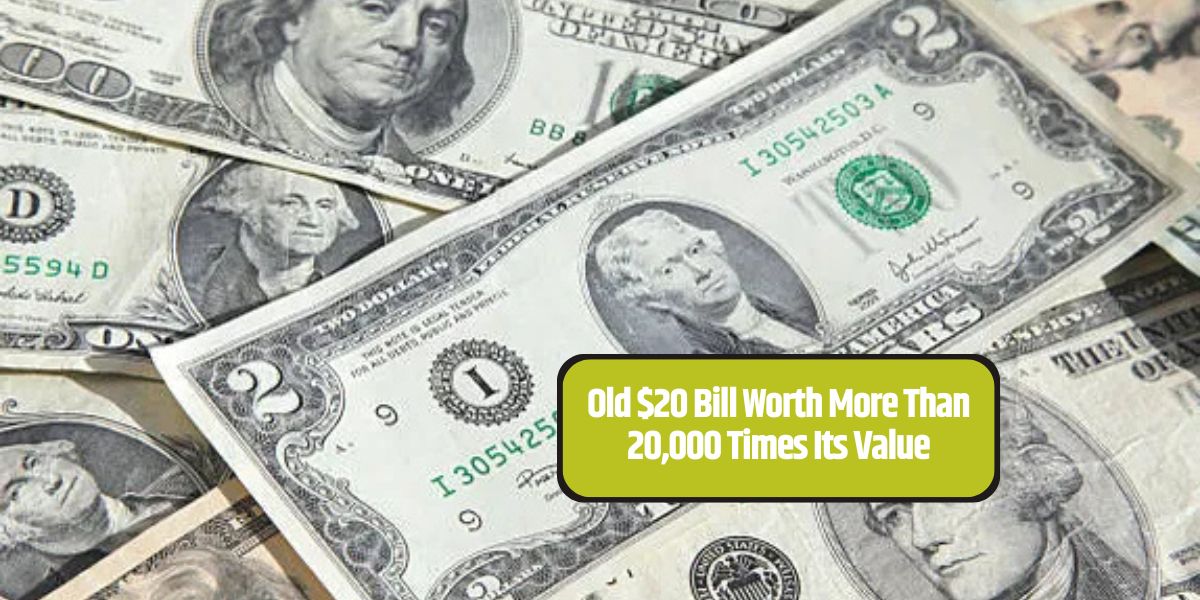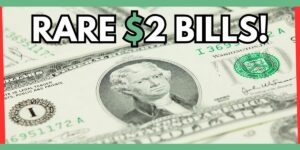The world of collectible U.S. currency isn’t limited to coins; paper money, like the $20 bill, holds its own allure. Rare and valuable $20 bills often fetch thousands of dollars, thanks to distinctive features, printing errors, and historical significance. These unique characteristics make them coveted items among collectors and investors alike. From misprints and star notes to low serial numbers and vintage bills in pristine condition, let’s explore some of the most valuable $20 bills in U.S. history.
1928 Gold Certificate $20 Bill
The 1928 Gold Certificate is a treasure for collectors due to its rarity and historical importance. Once redeemable for gold coinage, these bills serve as a relic of the U.S. financial system’s connection to gold. High-grade examples with minimal wear and vivid colors can command between $5,000 and $10,000, making them highly sought-after.
1934 Blue Seal Hawaii Overprint
Issued during World War II, the 1934 Blue Seal Hawaii Overprint $20 bill stands out for its unique purpose. Designed to circulate in Hawaii, it featured a distinctive “Hawaii” overprint and blue seal. This was intended to make the currency unusable if the islands were captured by enemy forces. Authentic and well-preserved examples are worth between $2,500 and $5,000, adding historical intrigue to any collection.
1861 Demand Note $20 Bill
The 1861 Demand Note is among the earliest forms of U.S. paper money, issued during the Civil War. These notes predate the Federal Reserve System and are cherished for their rarity, unique designs, and historical significance. In excellent condition, they can fetch $15,000 to $25,000, solidifying their status as a numismatic treasure.
1905 Technicolor $20 Bill
Nicknamed the “Technicolor Note,” the 1905 $20 bill is famous for its bold red and yellow hues, creating a visually stunning design. These notes are exceptionally rare, with uncirculated examples commanding values between $10,000 and $30,000. Their vibrant appearance and rarity make them a centerpiece for any serious collector.
Star Note $20 Bills
Star Notes are issued as replacements for misprinted or damaged bills and feature a star symbol next to the serial number. While not all Star Notes are valuable, those with low serial numbers or from limited production runs can be worth $500 to $3,000, depending on their rarity and condition.
1882 Brown Back $20 Bill
The 1882 Brown Back $20 bill is notable for its intricate artwork and the distinctive brown ink used on its reverse side. Issued by national banks, these notes are rare and prized for their aesthetic appeal and historical context. High-grade examples in strong condition are valued between $7,000 and $20,000.
1914 Federal Reserve Note $20 Bil
As one of the first $20 bills issued by the Federal Reserve, the 1914 Federal Reserve Note holds a special place in numismatic history. Its large size and elaborate design appeal to collectors. Bills in excellent condition can fetch $2,000 to $8,000, depending on their quality and features.
Table: Notable $20 Bills and Their Estimated Values
| Bill Type | Year | Unique Feature | Estimated Value |
|---|---|---|---|
| 1928 Gold Certificate | 1928 | Redeemable for gold | $5,000 – $10,000 |
| 1934 Blue Seal Hawaii Overprint | 1934 | WWII-era Hawaii overprint | $2,500 – $5,000 |
| 1861 Demand Note | 1861 | Civil War-era issue | $15,000 – $25,000 |
| 1905 Technicolor Note | 1905 | Vibrant red/yellow design | $10,000 – $30,000 |
| Star Note $20 Bill | Various | Replacement note with star | $500 – $3,000 |
| 1882 Brown Back | 1882 | Unique brown ink back | $7,000 – $20,000 |
| 1914 Federal Reserve Note | 1914 | First Federal Reserve issue | $2,000 – $8,000 |
If you have a $20 bill tucked away, it might be worth more than its face value. The value of these rare bills depends on their condition, unique characteristics, and historical significance. It’s wise to have them evaluated by a currency expert or appraiser to determine their true worth.
What makes a $20 bill valuable to collectors?
A: Unique features like printing errors, low serial numbers, star notes, and historical significance contribute to a bill’s value. Condition also plays a critical role.
Q: How can I tell if my $20 bill is a Star Note?
A: Look for a small star symbol next to the serial number on the bill. These notes were printed to replace misprinted or damaged currency.
Q: Are all old $20 bills valuable?
A: Not necessarily. While older bills are more likely to be valuable, their worth depends on rarity, condition, and unique characteristics.




